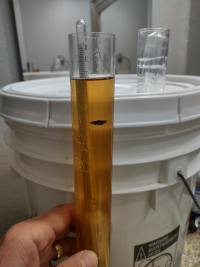- Joined
- Jul 16, 2020
- Messages
- 109
- Reaction score
- 56
For ease of mashing and stirring my grist, I heat my water in my smaller brew pot (7 gallons) and mash in without the bag. Wrap with a blanket and it hold the temp good enough.
The brewpot is an older turkey fryer that has an insert that held the turkey. It is basically a huge strainer. I place my bag in the strainer and suspend it in one of my bottling buckets.
Once the mash is finished, I pour it into the bag, let it drain into my large kettle and sparge until I get the preboil volume.
I find it works really well, is less messy than squeezing bag. By the time I get my volume, any 'drippings' from the bag are very low in sugar content. Wish I had a photo of this setup to share. I'm basically using what I have instead of buying more items.
The brewpot is an older turkey fryer that has an insert that held the turkey. It is basically a huge strainer. I place my bag in the strainer and suspend it in one of my bottling buckets.
Once the mash is finished, I pour it into the bag, let it drain into my large kettle and sparge until I get the preboil volume.
I find it works really well, is less messy than squeezing bag. By the time I get my volume, any 'drippings' from the bag are very low in sugar content. Wish I had a photo of this setup to share. I'm basically using what I have instead of buying more items.




